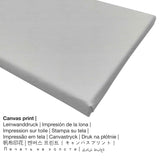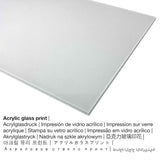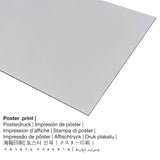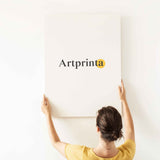Winslow Homer, 1906 - Moonlight na mmiri - ọmarịcha nka
Ụtụ gụnyere. Mbupu gbakọrọ na ndenye ọpụpụ.
What you should know the artpiece painted by the American painter Winslow Homer
The nkà nke oge a ihe omimi Moonlight on the Water e kere ya Winslow Homer. The 110 years old artwork measures the exact dimensions: 15 11/16 x 31 7/16 na (39,85 x 79,8 cm). Mmanụ na kwaaji was applied by the American artist as the medium of the work of art. Besides, the artwork can be viewed in in the Ụlọ ihe ngosi nka nke Los Angeles County nchịkọta. Nke a nkà nke oge a artwork, nke bụ nke ngalaba ọha a na-enye ya site n'ikike nke Ụlọ ihe ngosi nka nke Los Angeles County (www.lacma.org).: . Ọzọkwa, alignment bụ na odida obodo format ma nwee oke nke 2: 1, which means that the length is two times longer than the width. Winslow Homer was a painter from United States, whose style can be attributed primarily to Realism. The Realist painter lived for a total of 74 afọ, amuru na afo 1836 na Boston, Suffolk County, Massachusetts, United States wee nwụọ n'afọ 1910.
Kedu ụdị ngwa ngwaahịa m nwere ike ịtụ?
In the dropdown menu next to the article you can select your favorite material and size. The following sizes and materials are the options we offer you for individualization:
- Mbipụta nke aluminom: These are metal prints on aluminium dibond material with an outstanding depth effect - for a modern impression and a non-reflective surface structure. A direct Aluminium Dibond Print is the ideal introduction to art replicas on aluminum. The bright components of the artwork shine with a silk gloss but without the glow. The colors are luminous, the details of the print appear clear and crisp. The direct print on aluminium is one of the most demanded entry-level products and is a modern way to display art reproductions, because it draws focus on the replica of the artwork.
- Mbipụta kanvas: The printed canvas material mounted on a wooden stretcher frame. Also, a printed canvas makes a attractive and enjoyable feeling. Hanging your canvas print: Canvas prints are relatively low in weight, meaning that it is easy to hang up your Canvas print without the help of additional wall-mounts. Hence, canvas prints are suited for all kinds of walls.
- Bipụta na iko acrylic (nke nwere ezigbo mkpuchi iko): A glossy print on acrylic glass, often denoted as a plexiglass print, will change the original artwork into beautiful home décor and makes a distinct alternative option to canvas or aluminium dibond art prints. Your artwork is being custom-made with the help of modern UV direct printing technology. This has the image effect of rich and impressive colors. The great benefit of an acrylic glass art print is that contrasts and granular artwork details will be more recognizeable due to the very fine tonal gradation of the print.
- Mpempe akwụkwọ ederede (akwa akwa akwa): Our poster is a printed flat canvas with a slightly roughened surface structure. Please bear in mind, that depending on the size of the canvas poster print we add a white margin between 2-6cm round about the print motif, which facilitates the framing with your custom frame.
Ozi dị mkpa: We try all that we can in order to depict our products as closely as we can and to exhibit them visually in our shop. However, the colors of the print materials and the print result may vary slightly from the representation on the screen. Depending on your screen settings and the condition of the surface, color pigments can unfortunately not be printed as exactly as the digital version shown here. Because all the fine art prints are printed and processed by hand, there may also be slight variations in the motif's exact position and the size.
Ozi ederede
| Nkewa ngwaahịa: | nka nka |
| Usoro mmeputakwa: | dijitalụ mmeputakwa |
| Usoro mmepụta: | Mbipụta UV / dijitalụ |
| Production: | German mere |
| Ụdị ngwaahịa: | na mmepụta ihe |
| Ihe eji eme atụmatụ: | ihe ndozi mgbidi, ihe ndozi ụlọ |
| Nhazi onyonyo: | nhazi odida obodo |
| Njikwa oyiyi: | 2: 1 |
| Ntụgharị asụsụ oke onyonyo: | ogologo ahụ dị okpukpu abụọ karịa obosara |
| Ụdị dị iche iche dị: | mbipụta ọla (aluminium dibond), mbipụta akwụkwọ mmado (akwụkwọ kwaaji), mbipụta kanvas, mbipụta iko acrylic (nwere ezigbo mkpuchi iko) |
| Nhọrọ nke akwa akwa n'elu etiti ihe ndọtị (mbipụta akwa akwa): | 40x20cm - 16x8 ", 60x30cm - 24x12", 80x40cm - 31x16", 100x50cm - 39x20", 120x60cm - 47x24", 160x80cm - 63x31", 180-x90cm |
| Mbipụta iko acrylic (nwere ezigbo mkpuchi iko) nhọrọ nha: | 40x20cm - 16x8 ", 60x30cm - 24x12", 80x40cm - 31x16", 100x50cm - 39x20", 120x60cm - 47x24", 160x80cm - 63x31", 180-x90cm |
| Nhọrọ nha nke akwụkwọ mmado (akwụkwọ kwaaji): | 60x30cm - 24x12", 80x40cm - 31x16", 100x50cm - 39x20", 120x60cm - 47x24" |
| Mbipụta aluminom: | 40x20cm - 16x8", 60x30cm - 24x12", 80x40cm - 31x16", 100x50cm - 39x20", 120x60cm - 47x24" |
| Nhazi mbipụta nka: | na-enweghị etiti |
Ozi nka
| Aha ọrụ nka: | "Moonlight on the Water" |
| nhazi ọkwa: | sere |
| Nhazi nka: | nkà nke oge a |
| oge: | 20th narị afọ |
| Afọ nka: | 1906 |
| Afọ nka: | karịa afọ 110 |
| Agba na: | mmanụ na kwaaji |
| Akụkụ nke ọrụ nka mbụ: | 15 11/16 x 31 7/16 na (39,85 x 79,8 cm) |
| Ụlọ ihe ngosi nka / mkpokọta: | Ebe ngosi nka nke Los Angeles County |
| Ebe ngosi nka: | Los Angeles, California, Njikota Obodo Amerika |
| website: | www.lacma.org |
| Ikikere nke ihe osise: | ngalaba ọha |
| Site n'aka: | Ụlọ ihe ngosi nka nke Los Angeles County (www.lacma.org) |
Banyere onye na-ese ihe
| Ihe nkiri: | Winslow Homer |
| Aha ndi ozo: | w. homer, Homer Winslow, Homer, homer w., הומר וינסלאו, Winslow Homer |
| Gender: | nwoke |
| Obodo onye nka: | American |
| Ọrụ: | onye na-ese ihe |
| Obodo onye nka: | United States |
| nhazi ọkwa: | omenkà nke oge a |
| Ụdị nka: | Ihe ngosi |
| Ndụ: | 74 afọ |
| A mụrụ: | 1836 |
| Ebe omuma: | Boston, Suffolk County, Massachusetts, Njikota Obodo Amerika |
| Afọ nwụrụ: | 1910 |
| Obodo ọnwụ: | Prouts Neck, Cumberland County, Maine, Njikota Obodo Amerika |
© echebe nwebiisinka | Artprinta.com
Original information about the artwork by Los Angeles County Museum of Art (© Nwebiisinka - Ụlọ ihe ngosi nka nke Los Angeles County - Ebe ngosi nka nke Los Angeles County)
While living in Cullercoats in 1881-82, Homer reinterpreted the popular image of women anxiously searching the stormy North Sea for their loved ones. Quite unlike those heroic figures are the diminutive silhouettes in the museum’s painting, who very well may represent the summer visitors from the nearby hotels whom Homer and his family are known to have joined on at least one occasion as they watched the moonlit sea on the rocks near Homer’s home and studio at Prout’s Neck, Maine. On that occasion, the artist left the group, completing on the porch of his studio the charcoal drawing that formed the basis of his painting A Summer Night, 1890 (Musée d'Orsay, Paris), in which the figure at left in the museum’s painting seems to appear. Like the watercolor A Moonlit Sea, 1890 (Wadsworth Atheneum, Hartford), the museum’s painting may be a study for A Summer Night; or it may be an independent work of years earlier, related to the watercolor, Northeaster, dated 1883 (Brooklyn Museum), a daylight scene in which two women in tam-o’-shanter and round bonnet watch the sea from the rocks (although their positions are reversed). It can also be related to the painting Moonlight, Wood Island Light, 1894 (Metropolitan Museum of Art, New York), because of the exceptionally bold technique of both paintings. According to the art historian William Downes, that picture was painted in 1894 during an impulsive four or five hours’ work one night, entirely by moonlight, a seemingly impossible illumination for judging colors. Because of its exceptionally free technique, the museum’s painting is difficult to date on the basis of style. The connection with the works of 1890 seems most persuasive. For Homer, the moonlit sea was a recurring romantic theme in which the otherwise threatening sea seems tamed and charmed. The violence of the sea in Moonlight on the Water is somewhat unusual within this group. On the back of the painting the artist’s brother Charles, his executor, indicated the date 1906, a period when Homer was known to have begun no new pictures, only repainting old ones. While there is no evidence of repainting on the picture’s present surface, it may have been at this time that Homer restretched the painting, greatly changing its proportions by folding portions of the painting back around the stretcher at the top and sides to give it its present, unusually elongated shape. In adopting this format, Homer may have meant to accentuate the characteristics of the painting that relate to the Japanese prints he admired -- the theme of the great wave, diagonal compositional elements, silhouetted figures, and strong surface design.














